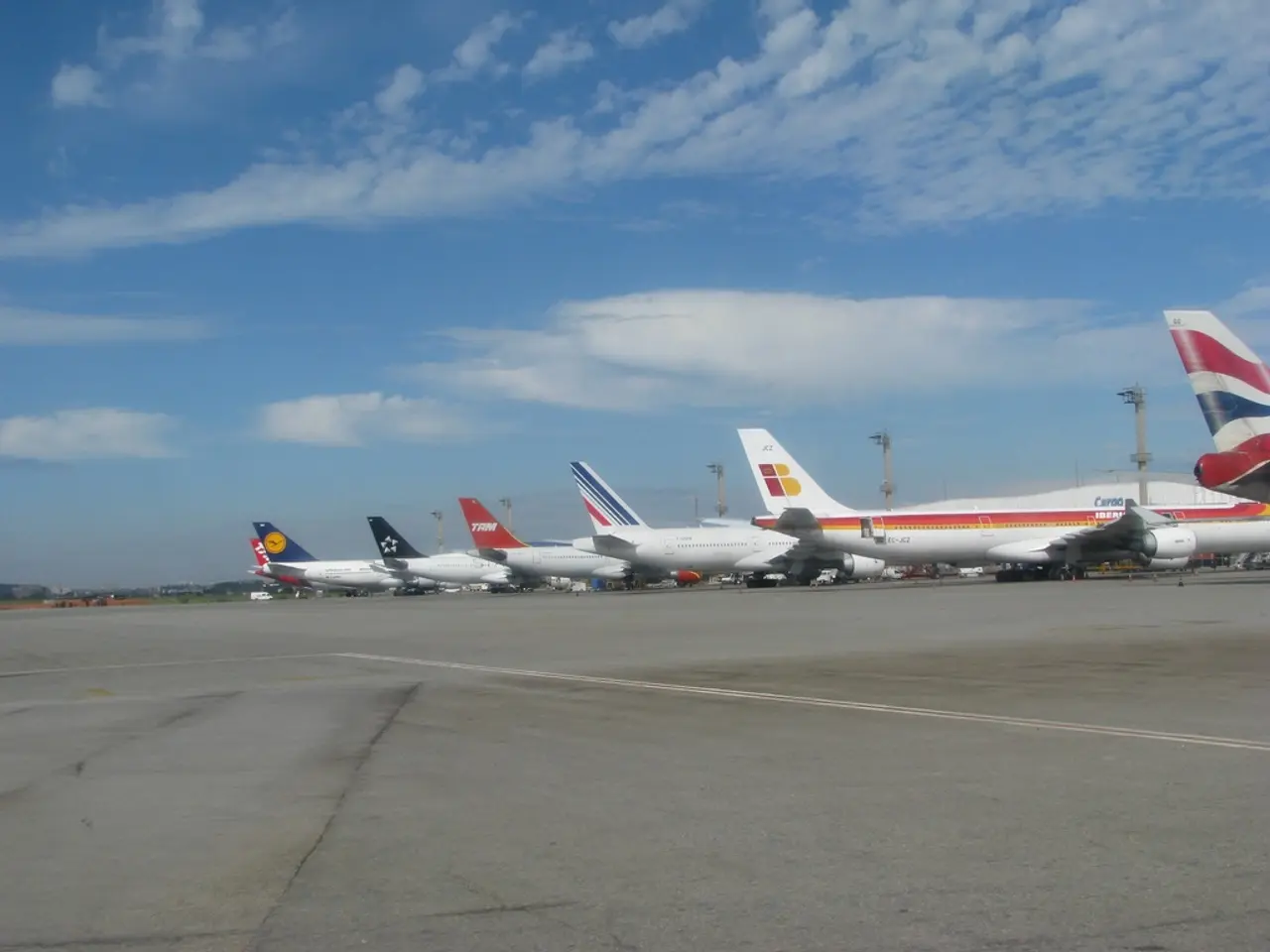Airlines argue that the imposition of a limit on night flights at Dublin Airport will hinder the airport's growth prospects
In a recent ruling, An Coimisiún Pleanála has approved an increase in Dublin Airport's annual nighttime flights to 35,672, while introducing noise limits. This decision has significant implications for the airport's growth, jobs, and expansion plans.
## Growth and Capacity The new limit effectively raises the potential for more flights compared to previous restrictions, supporting increased passenger numbers and air traffic. This move aligns with the airport's goal to increase passenger numbers to 40 million annually. The North Runway can now be used between 6am and midnight, providing more operational flexibility and potentially increasing daytime flights efficiency.
## Jobs and Economic Impact With increased flight capacity, there may be a corresponding increase in jobs related to airport operations. The growth in flights could boost local employment by supporting more businesses and services catering to increased passenger traffic.
## Expansion Plans and Environmental Considerations The removal of strict nighttime flight limitations could help in planning and execution of future expansion projects, providing more certainty about operational capacity and potential for future development. The introduction of a noise quota system may encourage the use of quieter and more environmentally friendly aircraft, aligning with international best practices and potentially supporting greener expansion strategies.
## Potential Challenges The decision to increase nighttime flights might face local backlash due to noise concerns, which could affect community relations and future development plans. The need to manage noise through strict quotas could limit the types of aircraft used, potentially affecting certain airlines' operations and requiring investment in quieter aircraft models.
DAA reaffirms its commitment to engaging with the local community to mitigate the impact of airport operations and has already begun to implement the noise insulation grant scheme. Aer Lingus argues that a quota system alone is sufficient to manage noise at Dublin Airport, while Ryanair criticizes the new ruling for not considering modern aircraft design and questions the point of investing in quieter aircraft with a blunt force cap on movements.
Local resident groups have expressed concern about the decision, with Liam O'Gradaigh, spokesman for St Margarets the Ward Residents, condemning the decision as it will subject thousands to unnecessary noise and pollution. The commission includes provision for an insulation scheme for eligible property owners.
Mr Jacobs, DAA's chief executive, welcomes the decision's clarity, stating it removes uncertainty for Dublin Airport, airlines, and has a positive impact on jobs and investment in Ireland. Ryanair calls the new limit a "second cap" on top of the existing 32 million a year limit on passengers at Dublin Airport.
In conclusion, the new ruling offers opportunities for growth and expansion but also presents challenges related to noise management and local community acceptance. It is crucial for all parties involved to work collaboratively to ensure a balanced approach that benefits both the airport's development and the local community.
Sports organizations near Dublin Airport might face disruptions due to increased flight activity, as the airport's growth plans now encompass a rise in daytime flights efficiency and potential expansion, potentially affecting noise levels during non-traditional sports hours. Given the new noise quota system that encourages the use of quieter aircraft, there may be opportunities for sports organizations to collaborate with airlines in promoting the use of more environmentally friendly planes, which can reduce noise pollution and facilitate sporting events during regular hours.








